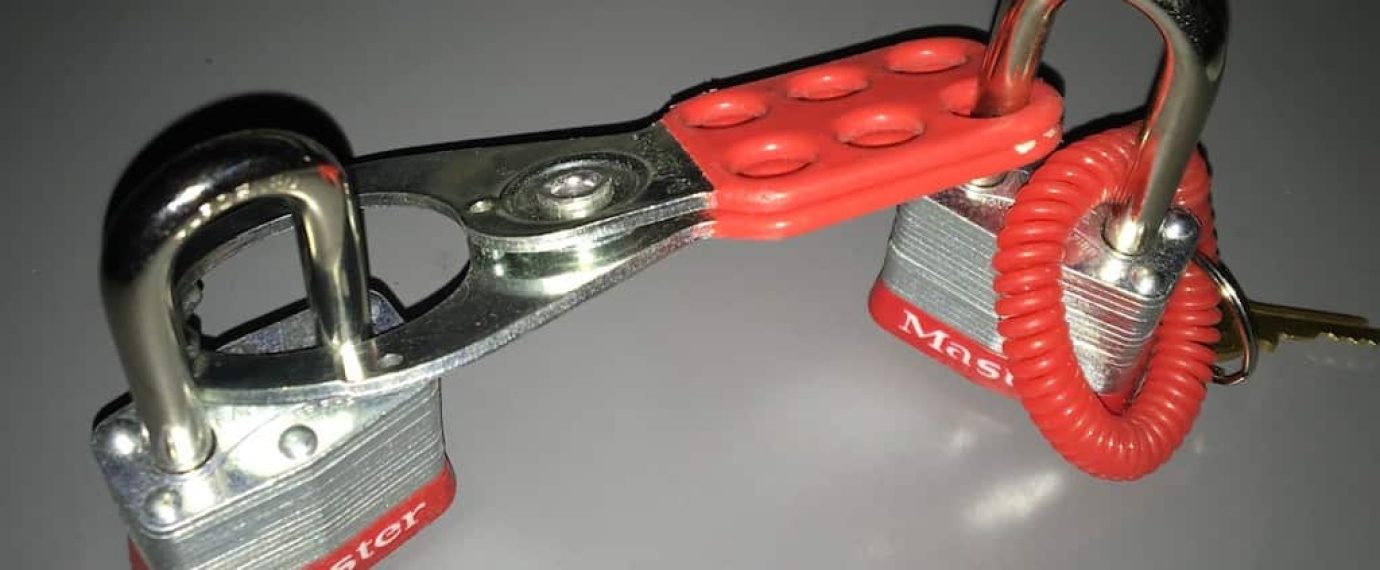How do I start a Lockout/Tagout Program?
Lockout/tagout programs prevent injuries and ultimately, save lives. Lockout/tagout is an energy control procedure that requires an employee to isolate energy before doing any cleaning, adjusting, or repairing of a piece of equipment. In layman’s terms, it means that if an employee is going to access a piece of equipment by removing a guard or sticking a body part into a point of operation to clean, adjust, or repair it, then the power to that machine needs to be turned off and locked in the off position. Although it sounds easy, there are approximately 120 deaths and 60,000 injuries that are energy control-related every year. Lockout/tagout citations are routinely in the top five of the most cited standards annually. This article will guide you toward an effective lockout/tagout implementation.
Where to start
It is required that each piece of equipment has a machine-specific lockout/tagout procedure. There are two exceptions to this rule: if a machine is only powered with a plug and you have control of that plug, then a procedure does not need to be developed. Further, if you have multiple machines that have similar energy control methods, then they can share a procedure. Otherwise, all energized equipment will need a procedure on how to properly isolate the energy. Here is the information that is required on a lockout/tagout procedure:
- Name of the procedure
- Energy sources
- Energy magnitude
- How to turn the machine off
- Where to isolate energy
- Number of locks and tags needed
- How to release stored energy
- How to verify that the machine is de-energized
Procedures need to be accessible to all authorized employees. A good practice is to post the procedure on the equipment or have the procedures stored in a central location like a lockout/tagout station.
Identifying energy sources
When identifying energy sources, don’t make the mistake of only looking for electric energy. Pneumatic, hydraulic, mechanical, thermal and other potential energy can all cause equipment to cycle. Identifying stored energy and dissipating it properly is very important. Releasing stored energy can prevent electrical shocks, punctures, pinches, nips, amputations, explosions, pressure releases, gravitational force and burns from occurring.
Periodic Inspections
To assure that the machine-specific procedures created are accurate and updated, a periodic inspection must be completed on each procedure once per year. This is a commonly missed step in implementing and maintaining a lockout/tagout program. The steps to complete a periodic inspection are as follows:
- An authorized employee is brought to the work station to perform a physical lockout
- The observer takes the existing procedure to the work area
- The authorized employee performs the lockout procedure
- The observer compares the actions to the procedure to ensure they are the same
- A periodic inspection form is filled out which includes the name of the equipment inspected, the date, the name of the authorized employee, if the employee has access to lockout/tagout equipment, if the employee has been trained, notes of any deficiencies in the procedure and if the employee performed the lockout according to the procedure
One of the most important parts of completing the periodic inspections is to update the lockout/tagout procedures and make all authorized employees aware of the updates. Remember, procedures need to be accessible to all authorized employees. This is an important part of your lockout training.
Locks, tags, and devices
Locks need to be specific to lockout operations, meaning they need to look different from other locks that may be used around the building. These locks also need to only have one key and not be keyed alike. This is so the user keeps the key and is the only person that can remove the lock. Never lockout for someone else!
Tags are required to identify who placed the lock and why they placed it. In the case of an employee forgetting to remove a lock, you need to know who it belonged to so you can contact them. NEVER remove a lock for an employee without contacting them first. You must speak to them or the lock cannot be removed. If someone gets hurt because you removed a lockout device, you can be held criminally liable.
A device can be likened to an accessory that helps isolate energy. Imagine a ball valve or a fuse in a breaker box; locks cannot be directly attached to lock them in the off position. A device serves as an implement that can be attached to a valve, fuse or other energized point to hold it in the off position, used alongside a lock to secure the device in place.
Training
There are two groups of employees that require training. Authorized employee training is required for personnel that will be placing locks and tags for their protection. This training includes going over the seven steps to a proper lockout, lockout/tagout procedures and where to locate them, periodic inspections, energy sources, isolation points, group lockouts, shift change procedures, maintenance and exceptional situations (such as the procedure to remove a lock for an absent authorized employee like a set-up, maintenance or sanitation employee).
All other employees are required to receive Awareness (or Affected) level training. Everyone in the workplace needs to know what lockout is, how energy control is practiced and how it keeps authorized employees safe from injury and death.
U.S. Compliance provides safety, health and environmental services to hundreds of facilities in the manufacturing and general industry sector across the country and can help you develop an effective Lockout/Tagout Program.



